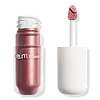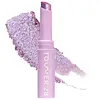r.e.m. beauty Midnight Shadows Lustrous Liquid Eyeshadow Versus Tower 28 Beauty Gogo Cooling Shimmer 8H Eyeshadow Stick
What's inside
What's inside
 Key Ingredients
Key Ingredients

 Benefits
Benefits

 Concerns
Concerns

 Ingredients Side-by-side
Ingredients Side-by-side

Isododecane
EmollientMica
Cosmetic ColorantCalcium Aluminum Borosilicate
Trimethylsiloxysilicate
EmollientGlyceryl Tribehenate/Isostearate/Eicosandioate
EmollientOctyldodecanol
EmollientHydrogenated Styrene/Isoprene Copolymer
Disteardimonium Hectorite
StabilisingSilica
AbrasiveAlcohol Denat.
AntimicrobialCaprylic/Capric Triglyceride
MaskingPolyhydroxystearic Acid
EmulsifyingPolyisoprene
Isostearic Acid
CleansingPentaerythrityl Tetra-Di-T-Butyl Hydroxyhydrocinnamate
AntioxidantLecithin
EmollientPolyglyceryl-3 Polyricinoleate
EmulsifyingWater
Skin ConditioningTalc
AbrasiveCalcium Titanium Borosilicate
AbrasiveSynthetic Fluorphlogopite
BHT
AntioxidantCI 77891
Cosmetic ColorantIron Oxides
CI 77400
Cosmetic ColorantIsododecane, Mica, Calcium Aluminum Borosilicate, Trimethylsiloxysilicate, Glyceryl Tribehenate/Isostearate/Eicosandioate, Octyldodecanol, Hydrogenated Styrene/Isoprene Copolymer, Disteardimonium Hectorite, Silica, Alcohol Denat., Caprylic/Capric Triglyceride, Polyhydroxystearic Acid, Polyisoprene, Isostearic Acid, Pentaerythrityl Tetra-Di-T-Butyl Hydroxyhydrocinnamate, Lecithin, Polyglyceryl-3 Polyricinoleate, Water, Talc, Calcium Titanium Borosilicate, Synthetic Fluorphlogopite, BHT, CI 77891, Iron Oxides, CI 77400
Water
Skin ConditioningSynthetic Fluorphlogopite
Propanediol
SolventCalcium Sodium Borosilicate
Chondrus Crispus Powder
AbrasivePentylene Glycol
Skin ConditioningSaccharide Isomerate
HumectantHydroxyacetophenone
AntioxidantCalcium Chloride
Astringent1,2-Hexanediol
Skin ConditioningCaprylyl Glycol
EmollientSilica
AbrasiveMica
Cosmetic ColorantCalcium Aluminum Borosilicate
Tetrasodium Glutamate Diacetate
Aminomethyl Propanediol
BufferingAluminum Calcium Sodium Silicate
Tin Oxide
AbrasiveCitric Acid
BufferingSodium Citrate
BufferingIron Oxides
CI 77891
Cosmetic ColorantWater, Synthetic Fluorphlogopite, Propanediol, Calcium Sodium Borosilicate, Chondrus Crispus Powder, Pentylene Glycol, Saccharide Isomerate, Hydroxyacetophenone, Calcium Chloride, 1,2-Hexanediol, Caprylyl Glycol, Silica, Mica, Calcium Aluminum Borosilicate, Tetrasodium Glutamate Diacetate, Aminomethyl Propanediol, Aluminum Calcium Sodium Silicate, Tin Oxide, Citric Acid, Sodium Citrate, Iron Oxides, CI 77891
Ingredients Explained
These ingredients are found in both products.
Ingredients higher up in an ingredient list are typically present in a larger amount.
Calcium Aluminum Borosilicate is made up of calcium, aluminum, and silicates. It is a glass-like material. In cosmetics, it comes in the form of flakes or microspheres.
Calcium aluminum borosilicate is a bulking agent, meaning it helps thicken a product.
This ingredient is created by slowly mixing several minerals, including kaolin clay.
Although “aluminum” in an ingredient name can raise red flags for some consumers, the form and usage context matter significantly. For typical topical applications, there is no substantial evidence of health risks - such as cancer, neurotoxicity, or systemic “aluminum overload.”
Learn more about Calcium Aluminum BorosilicateCi 77891 is a white pigment from Titanium dioxide. It is naturally found in minerals such as rutile and ilmenite.
It's main function is to add a white color to cosmetics. It can also be mixed with other colors to create different shades.
Ci 77891 is commonly found in sunscreens due to its ability to block UV rays.
Learn more about CI 77891Mica is a naturally occurring mineral used to add shimmer and color in cosmetics. It can also help improve the texture of a product or give it an opaque, white/silver color.
Serecite is the name for very fine but ragged grains of mica.
This ingredient is often coated with metal oxides like titanium dioxide. Trace amounts of heavy metals may be found in mica, but these metals are not harmful in our personal products.
Mica has been used since prehistoric times throughout the world. Ancient Egyptian, Indian, Greek, Roman, Aztec, and Chinese civilizations have used mica.
Learn more about MicaSilica, also known as silicon dioxide, is a naturally occurring mineral. It is used as a fine, spherical, and porous powder in cosmetics.
Though it has exfoliant properties, the function of silica varies depending on the product.
The unique structure of silica enhances the spreadability and adds smoothness, making it a great texture enhancer.
It is also used as an active carrier, emulsifier, and mattifier due to its ability to absorb excess oil.
In some products, tiny microneedles called spicules are made from silica or hydrolyzed sponge. When you rub them in, they lightly polish away dead skin layers and enhance the penetration of active ingredients.
Learn more about SilicaSynthetic Fluorphlogopite is the synthethic version of mica. It consists of fluorine, aluminum and silicate.
Synthetic Fluorphlogopite is used to add volume to products.
It is considered non-irritating on the skin.
Learn more about Synthetic FluorphlogopiteWater. It's the most common cosmetic ingredient of all. You'll usually see it at the top of ingredient lists, meaning that it makes up the largest part of the product.
So why is it so popular? Water most often acts as a solvent - this means that it helps dissolve other ingredients into the formulation.
You'll also recognize water as that liquid we all need to stay alive. If you see this, drink a glass of water. Stay hydrated!
Learn more about WaterThis ingredient is a combination of red, black, and yellow iron oxide pigments. This combination of colors is usually found in foundation, because it results in a "skin" color.